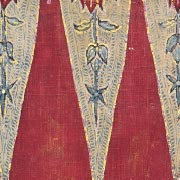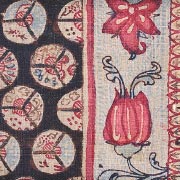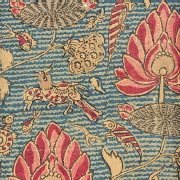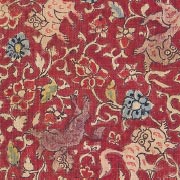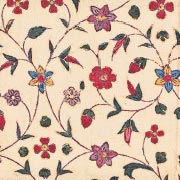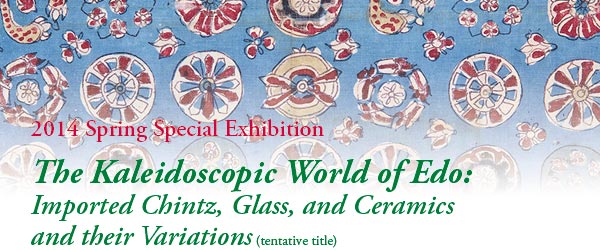

Although Japan had a national isolation policy during the Edo period (1615–1868), a wealth of foreign goods, much more than imaginable, was being imported to the country. Among these objects, the novel and beautiful articles brought from distant lands on Dutch ships-which served as the only bridge between Japan and Europe-must have touched the hearts of the Edo-period Japanese. Seeing these things must undoubtedly have felt as if looking through a kaleidoscope from Europe.
Of the various imported goods during the Edo period, this exhibition features objects introduced to Japan by the Dutch East Indies Company, particularly Indian chintz, European glass, and Dutch ceramics, particularly from Delft. The exhibition also shows how these articles were appreciated, used, and applied in Japan during this time.
With the importation and transmission of textiles and ceramics that came to Japan during the Edo period was the development of a rich variation of forms such as
jinbaori (battle surcoats), kosode (small-sleeved kimono), and accessories made from Indian chintz, Japanese glass inspired by European glass, and Kenzan and other Japanese wares in the style of Dutch ceramics. The aesthetic criteria set by the Japanese of the Edo period can be found in these “early imports” that have survived two to four hundreds of years and been carefully preserved to this day. At the same time, we can also see the diverse and refined ways in which they completely sublimated cultural artifacts from abroad and incorporated them into their own culture.
